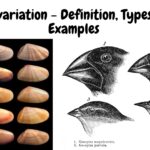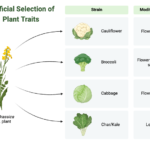AS and A Level Biology 51 Views 1 Answers
Sourav PanLv 9October 29, 2024
Explain the importance of mitosis in the production of genetically identical daughter cells during: growth of multicellular organisms replacement of damaged or dead cells, repair of tissues by cell replacement, asexual reproduction
Explain the importance of mitosis in the production of genetically identical daughter cells during: growth of multicellular organisms replacement of damaged or dead cells, repair of tissues by cell replacement, asexual reproduction
Please login to save the post
Please login to submit an answer.
Sourav PanLv 9May 15, 2025
Mitosis is crucial for the production of genetically identical daughter cells, which is essential in various biological processes, especially in multicellular organisms. Here’s a breakdown of its role in specific areas:
1. Growth of Multicellular Organisms
- Cell Proliferation: During growth, multicellular organisms need to increase the number of cells to expand and develop. Mitosis enables a single cell to divide and produce two genetically identical daughter cells, ensuring that each new cell carries the same genetic information.
- Consistent Genetic Makeup: Mitosis ensures each daughter cell receives an exact copy of the parent cell’s DNA, which is necessary for maintaining genetic consistency and normal function throughout the organism’s tissues and organs.
2. Replacement of Damaged or Dead Cells
- Tissue Maintenance: As cells naturally age or get damaged, they need to be replaced to maintain healthy tissue function. Mitosis provides a mechanism for creating new cells that match the genetic makeup of the surrounding tissue, which helps in preserving the structure and function of the tissue.
- Homeostasis: By producing genetically identical cells to replace damaged ones, mitosis maintains the stability of the internal environment, ensuring that tissues continue to operate as needed.
3. Repair of Tissues by Cell Replacement
- Healing Process: After injury, tissues undergo mitotic cell division to replace damaged cells, allowing for repair and restoration of the affected area. Since mitosis produces cells that are genetically identical, it ensures that the repair process contributes functionally appropriate cells.
- Regeneration of Specialized Cells: In tissues like skin, liver, and even some nerve cells, mitosis regenerates specific cell types, aiding recovery and restoring normal function.
4. Asexual Reproduction
- Clonal Offspring Production: In organisms that reproduce asexually, mitosis is the primary method of reproduction. It produces offspring that are genetically identical to the parent, preserving the species’ genetic traits.
- Population Stability: Since mitosis ensures identical genetic information, it promotes stable populations in environments where adaptation through variation is not critical, such as in certain stable ecological niches.
Overall, mitosis is essential in creating and maintaining genetic uniformity in daughter cells, supporting organismal growth, tissue repair, and reproduction in multicellular life forms.
0
0 likes
- Share on Facebook
- Share on Twitter
- Share on LinkedIn
0 found this helpful out of 0 votes
Helpful: 0%
Helpful: 0%
Was this page helpful?




